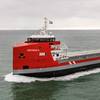ABS Issues Subsea Processing Advisory
ABS has developed the Subsea Processing System (SPRS) Advisory that provides an overview of the SPRS and associated sub-systems that are currently available and addresses its technology maturity level.
The advisory also describes the role of ABS as an independent classification society in the verification and validation of subsea processing technologies including new/unproven technologies through the ABS New Technology Qualification services.
The advisory is the first in a series of publications planned by ABS over the next few years. Future publications will include guidance notes, advisories and white papers that provide insight on subsea processing technologies.
Deepwater production remains an essential part of the global energy mix and economically viable projects continue to progress. To maintain competitiveness, the offshore industry continually evaluates ways to optimize system designs and streamline operations with OPEX/CAPEX-reducing solutions.
Subsea processing systems (SPRS) are increasingly being considered as a cost-effective solution for both brownfield (mature) and greenfield (new) developments given its various benefits.
The benefits of an SPRS include the potential for reducing CAPEX and OPEX associated with topside facilities, increased design flexibility, improved recovery and production rates, extended field life, reduction of flow assurance problems, debottleneck of topside water treatment constraints, reduction of energy consumption for produced water, and minimization of manned operations associated with a topside facility.
The building blocks of a subsea processing system comprise the subsea separation/treatment system, subsea boosting system, subsea (re-)injection system, subsea power transmission and distribution system, and subsea monitoring and control system. Typically, an SPRS will at a minimum include a subsea boosting system and/or separation/treatment system.
As the industry increases reliance on these systems, there are still some technical challenges that need to be overcome before wider adoption is possible. Some of these challenges include the effects of external pressure on SPRS design, long-distance power transmission/distribution, and optimized monitoring and control systems.
While the industry is actively addressing these challenges, near-term field applications primarily focus on subsea boosting systems and components for enhanced oil recovery, increasing tie-back distances and extending field life. As part of this effort, ABS is dedicated to supporting the industry by engaging in various R&D activities and industry initiatives to advance the development of subsea processing technologies and their implementation.












